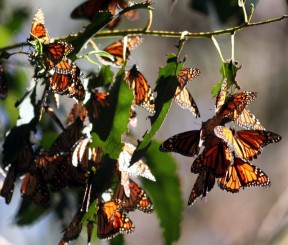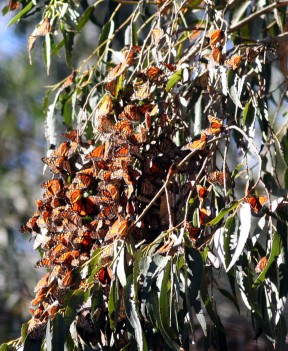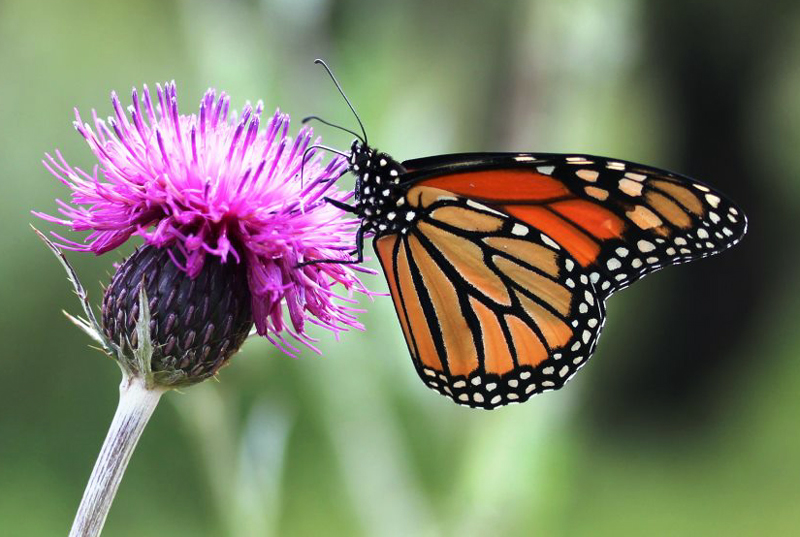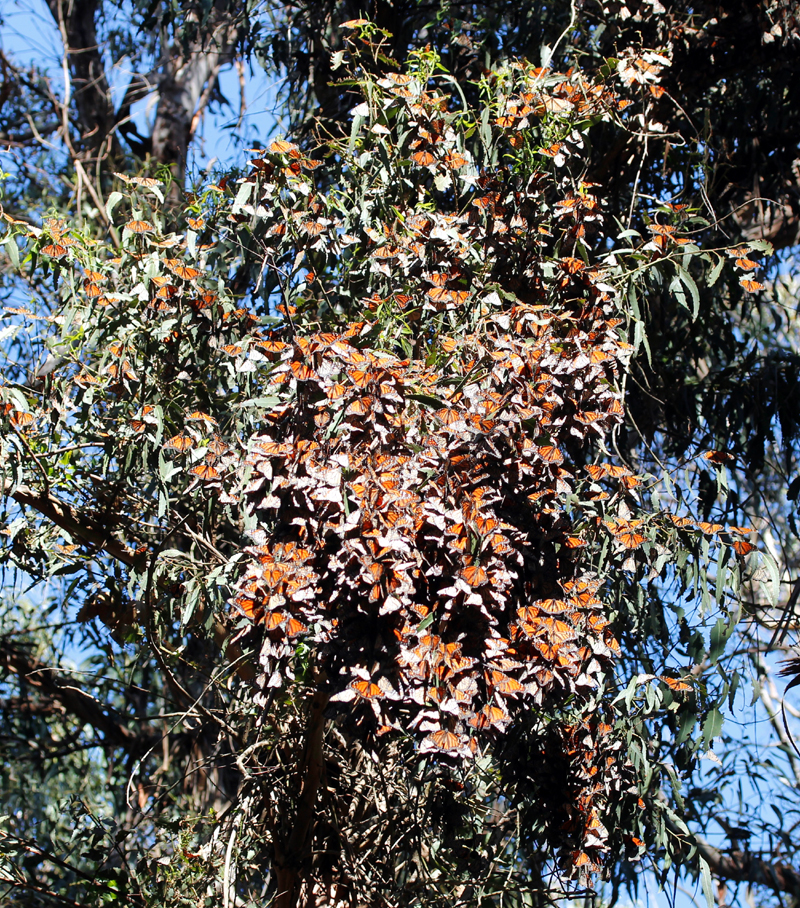 Monarchy is not taking over. No king, queen or emperor is in Coronado; I am referring to the large, migratory orange and black butterflies that are spending the winter there in the eucalyptus grove.
Monarchy is not taking over. No king, queen or emperor is in Coronado; I am referring to the large, migratory orange and black butterflies that are spending the winter there in the eucalyptus grove.
I try to keep my articles about nature in Santa Clarita, but this is such a wonderful experience. It’s something you expect to read about only in National Geographic. It is not so far from home; it’s in Goleta, which is above Isla Vista, close to UCSB, so about an hour and 45 minutes from Santa Clarita.
What is going on there?
The monarch butterflies cannot survive cold winter temperatures of the northern states, so they migrate south and spend the winter in this grove of eucalyptus.
I first arrived there on a foggy day and was looking for the butterflies when I noticed the branches were covered with a sort of brown fur. After a second look, I realized there were thousands of butterflies amassed in grapes along the branches, with their wings closed. As soon as the sun came out, clouds of butterflies rose into the air, and I felt like Alice in Wonderland. It was such an incredible, beautiful sight and such a rare situation to be surrounded by all those delicate and colorful creatures that the memory makes me smile.
The butterflies are here from January to March to escape the cold weather. They will leave in March, so plan your visit now: Take Highway 126; it turns into the 101 North. Exit Storke Road/Glen Annie and head south (away from the mountains). Turn right on Hollister Avenue, drive about 1.2 miles and take a left on Coronado Drive. The entrance of the preserve is at the end of Coronado Drive. It is free; it is an easy, flat walk, but it can get muddy, so wear good shoes.
After the preserve, you can take a lovely walk on the buff with a view of the ocean, take a picnic and have a wonderful time.
It is their roosting spot and they spend the winter there, safe from the cold. Monarch butterflies are the only insects that can fly 2,500 miles to a warmer climate.
How they can find this roost is a big mystery. Their life span is short, so the monarchs coming to roost this winter are the great-great-grand children of the butterflies that left the previous spring.
We do not know how their homing system works; we can track their whereabouts because some butterflies get tagged on their wings. The tag can be checked, and it serves as proof of the long journey of a specific individual.
We came to the conclusion their homing system is a combination of the position of the sun in the sky and their use of the Earth’s magnetic field for orientation.
Monarch butterflies are poisonous or distasteful to birds and mammals because of the poison contained in milkweed they consume as larvae. The bright colors of the larvae and adults are thought to function as warning colors.
 Let’s review the life cycle of the monarch butterfly. The egg lasts about four to six days, and the caterpillar breaks out of the egg (this is known as the larva stage). The caterpillar will eat as much as possible for about 12 to 16 days and will grow to about two inches long. Then the caterpillar stops eating, spins its cocoon and becomes a chrysalis for about nine to 12 days. Another miracle will occur when the most gorgeous butterfly emerges, breaking free from the cocoon and letting its wings get some strength before the first flight.
Let’s review the life cycle of the monarch butterfly. The egg lasts about four to six days, and the caterpillar breaks out of the egg (this is known as the larva stage). The caterpillar will eat as much as possible for about 12 to 16 days and will grow to about two inches long. Then the caterpillar stops eating, spins its cocoon and becomes a chrysalis for about nine to 12 days. Another miracle will occur when the most gorgeous butterfly emerges, breaking free from the cocoon and letting its wings get some strength before the first flight.
Butterflies are beautiful and incredible insects. Their wings are not well designed for such a long journey; some research indicates they preserve their energy in flight by gliding on air currents as they travel south, but we really do not understand how they can handle such a long and dangerous flight when even a rain storm can result in death.
Take a little drive to their wintering spot, choose a sunny day and you will have an unforgettable experience. I hope you will be able to appreciate them even more by knowing the difficulty of their long journey.
Evelyne Vandersande has been a docent at Placerita Canyon Nature Center for 27 years. She lives in Newhall.
The Monarchs Are On the Coast | Commentary by Evelyne Vandersande




